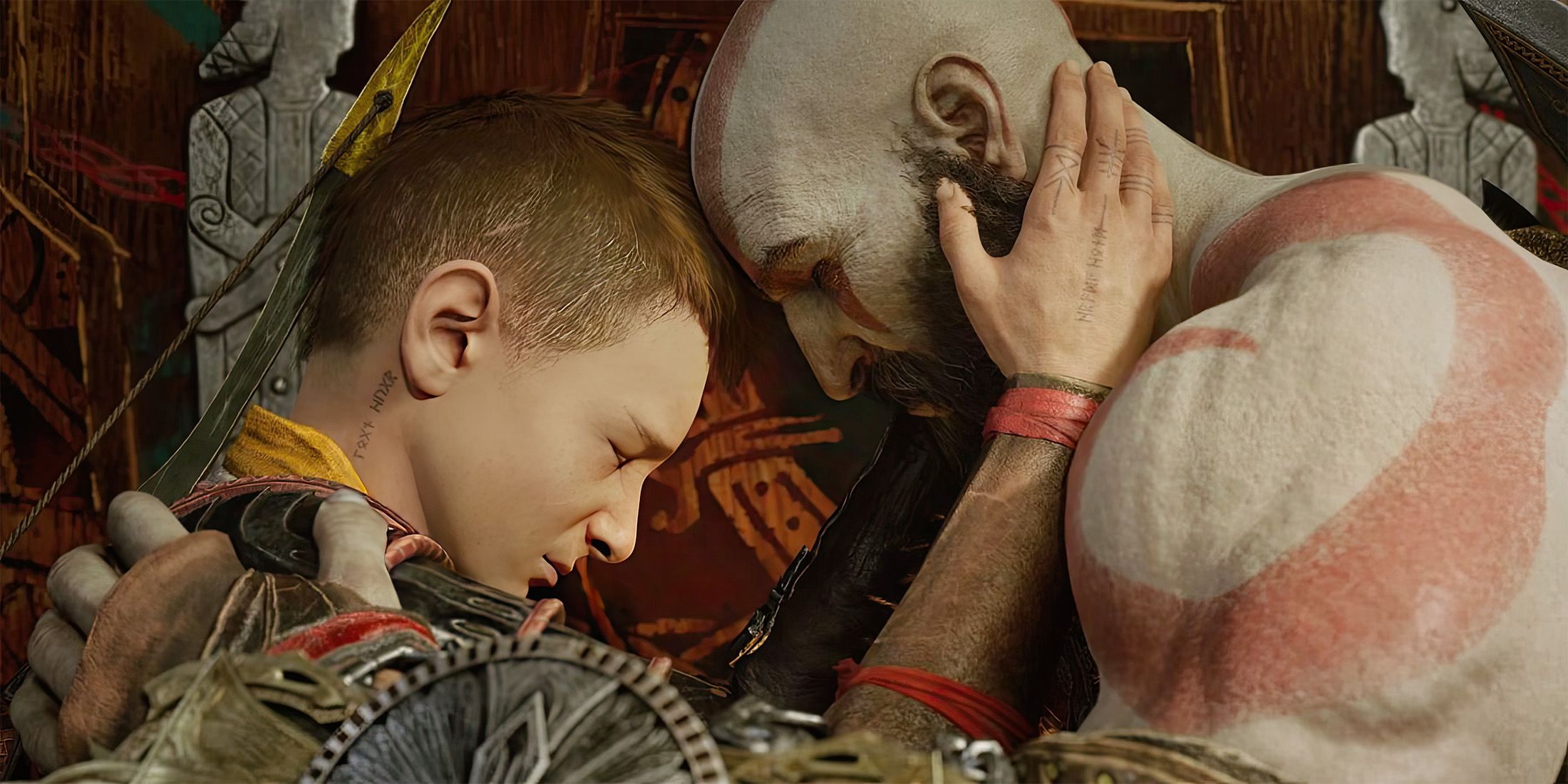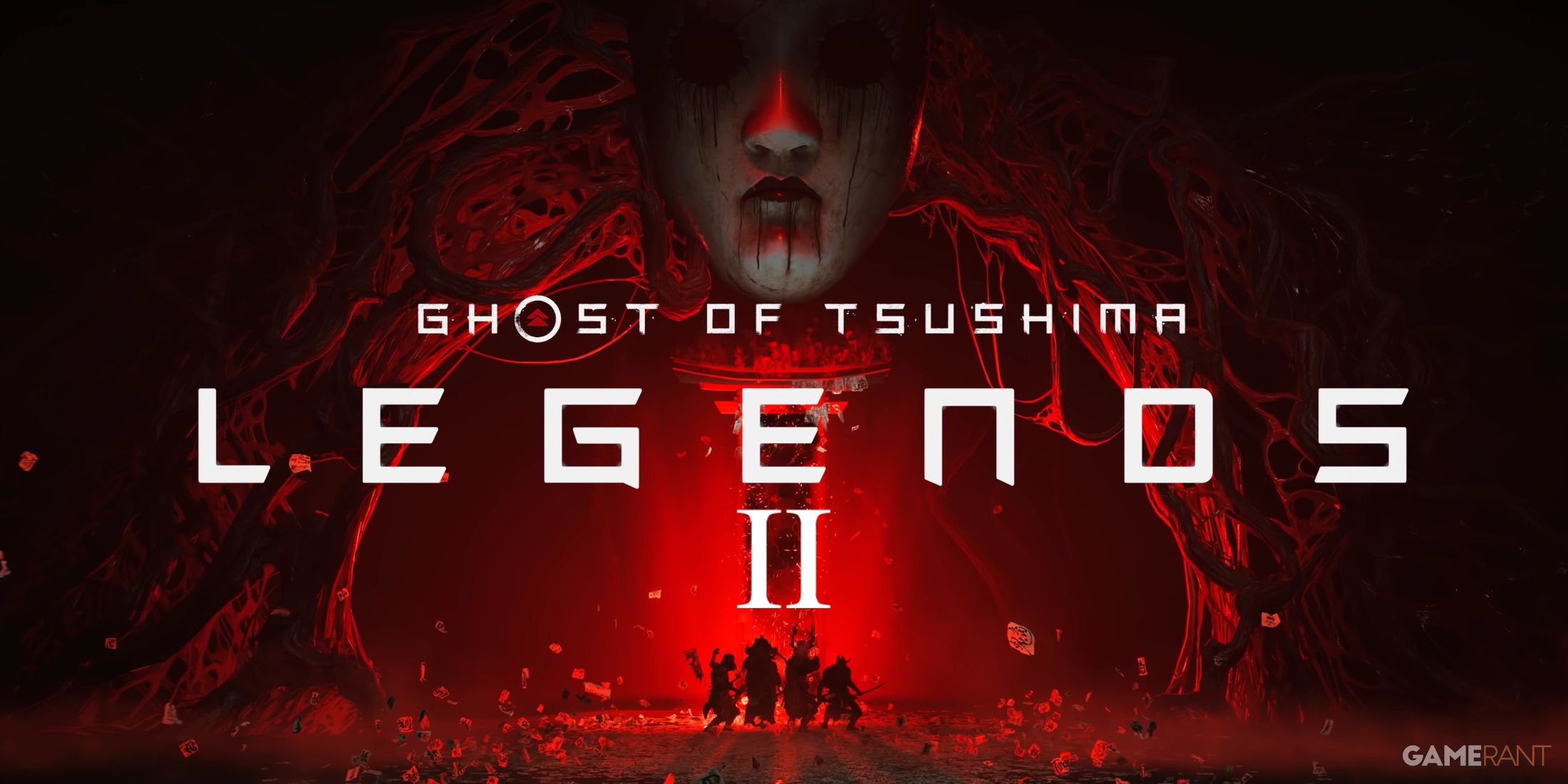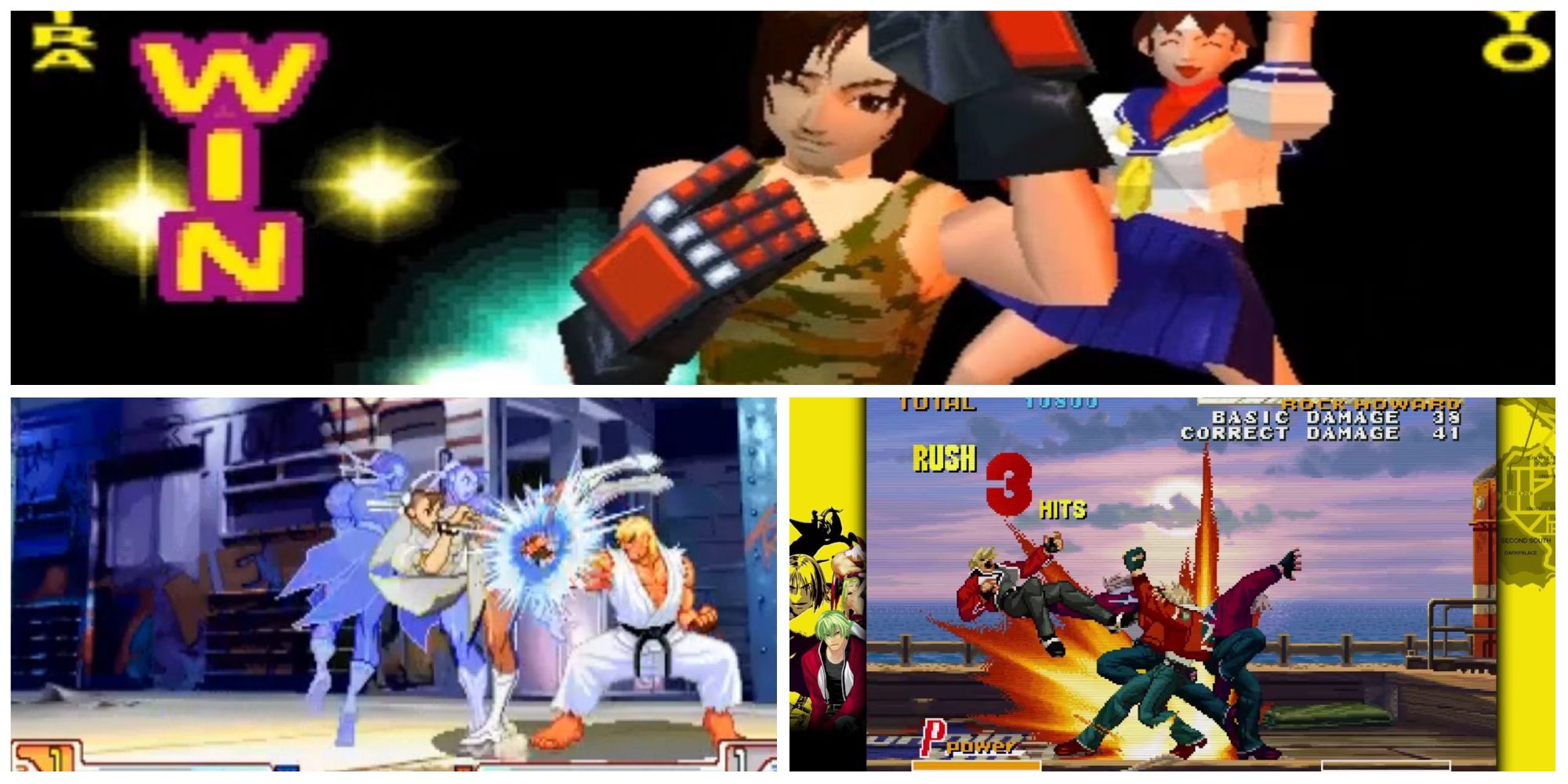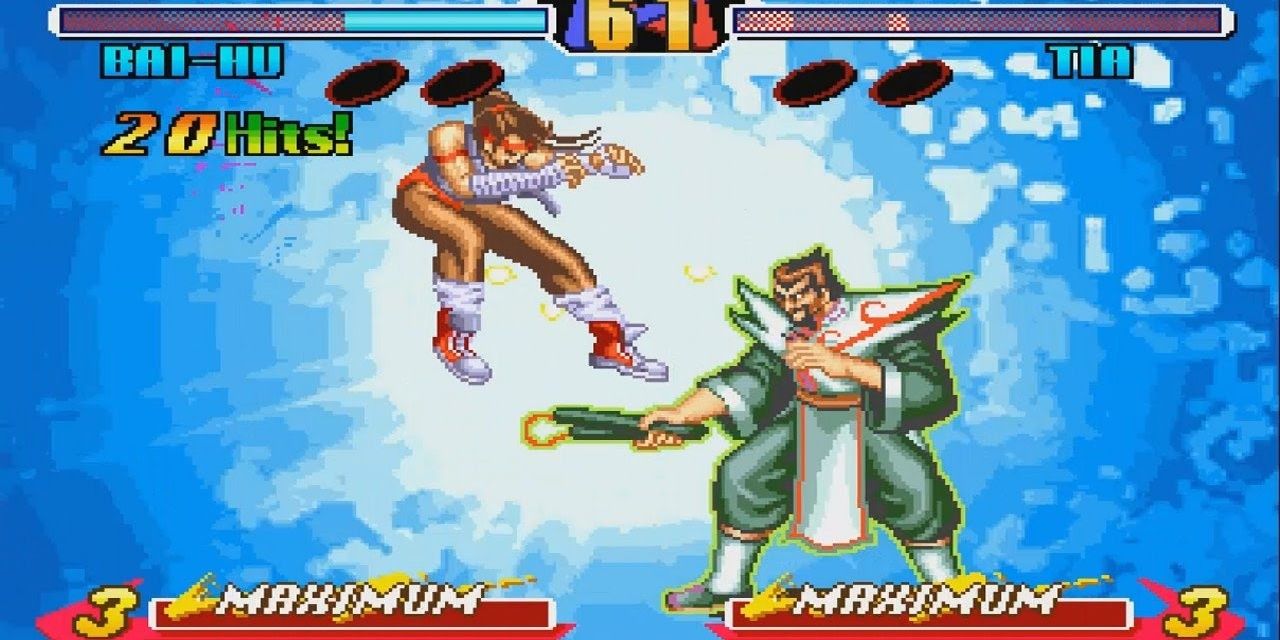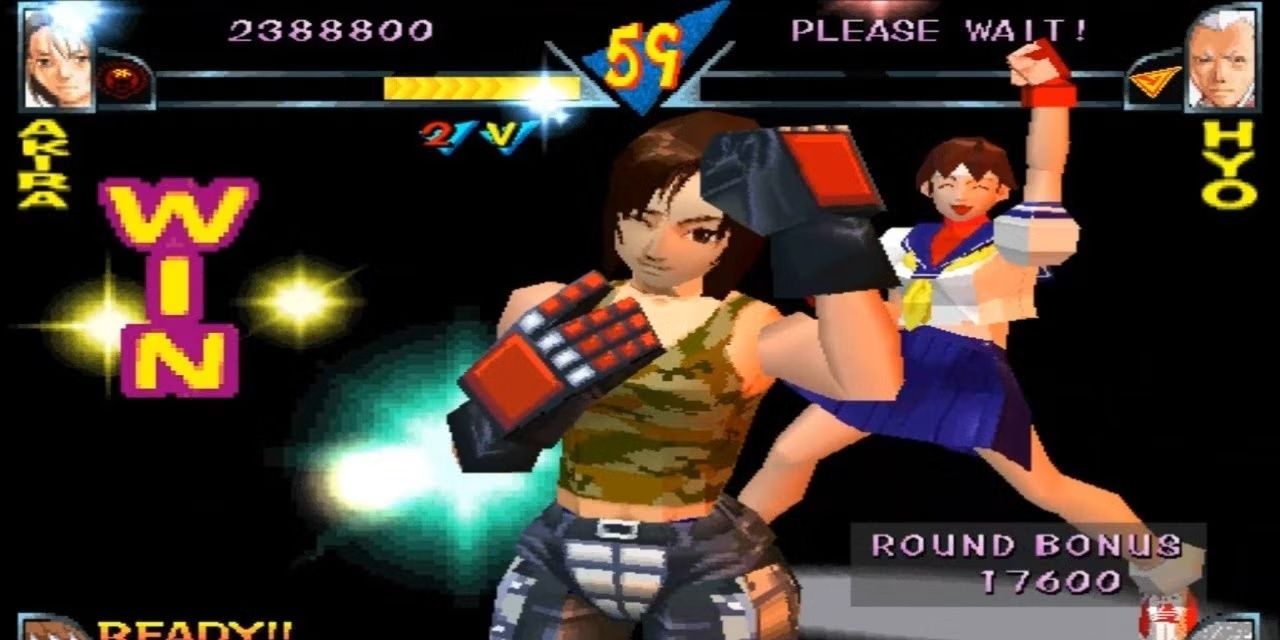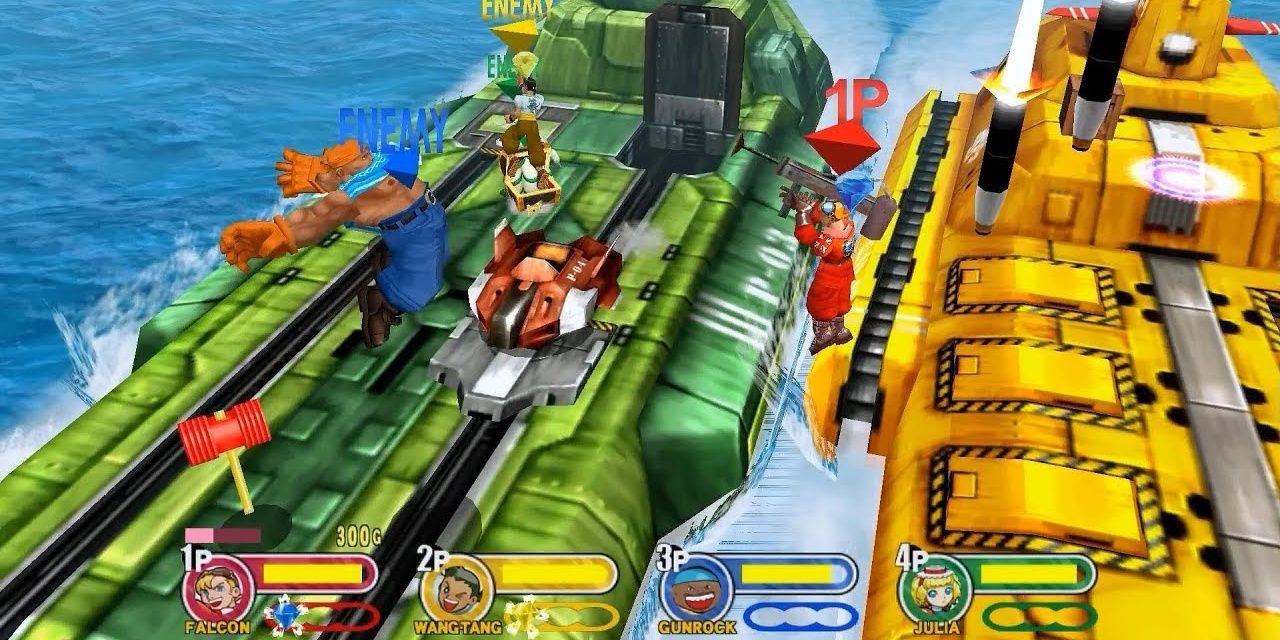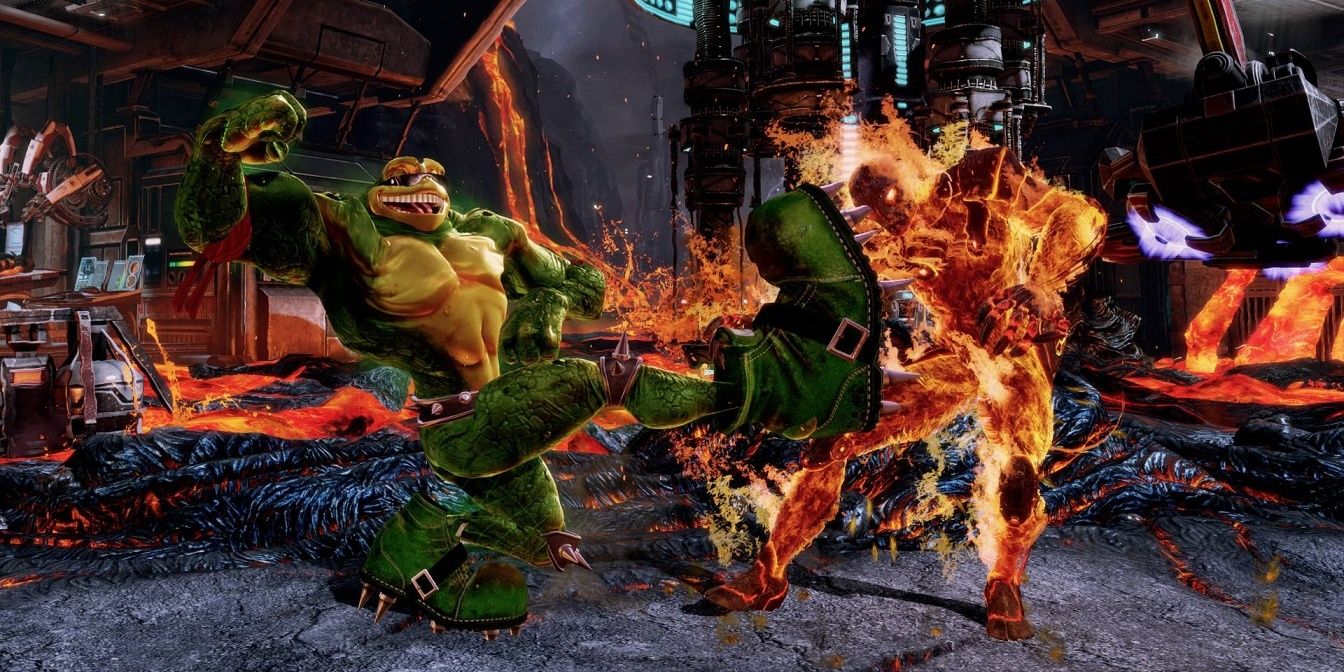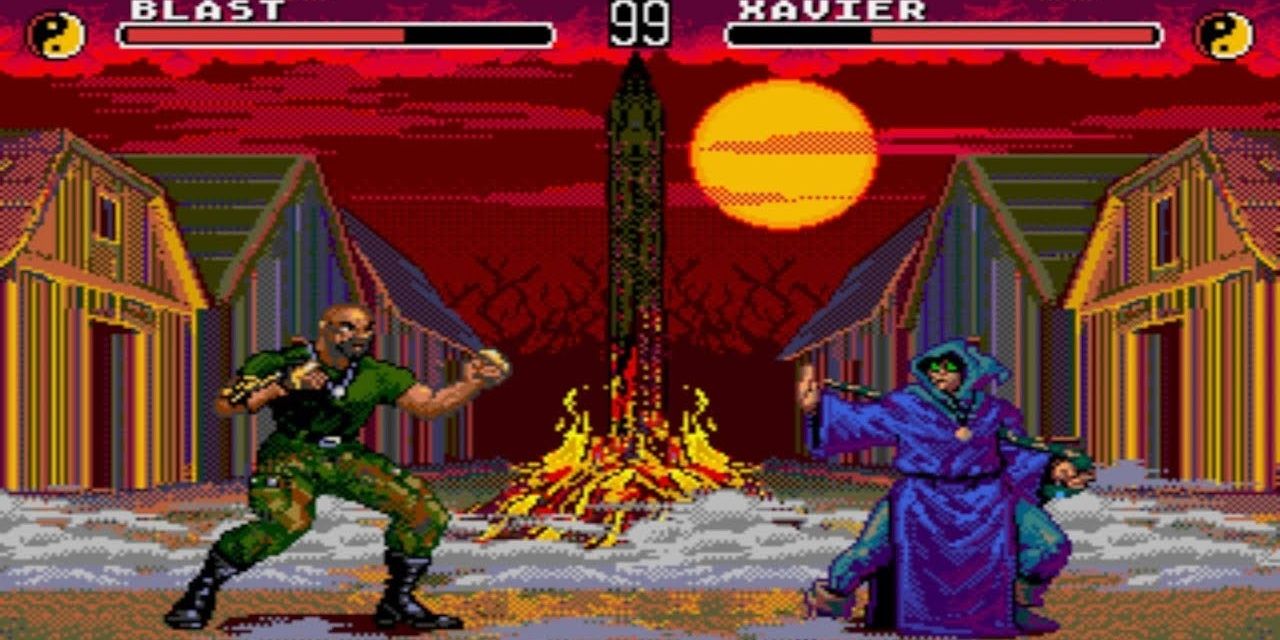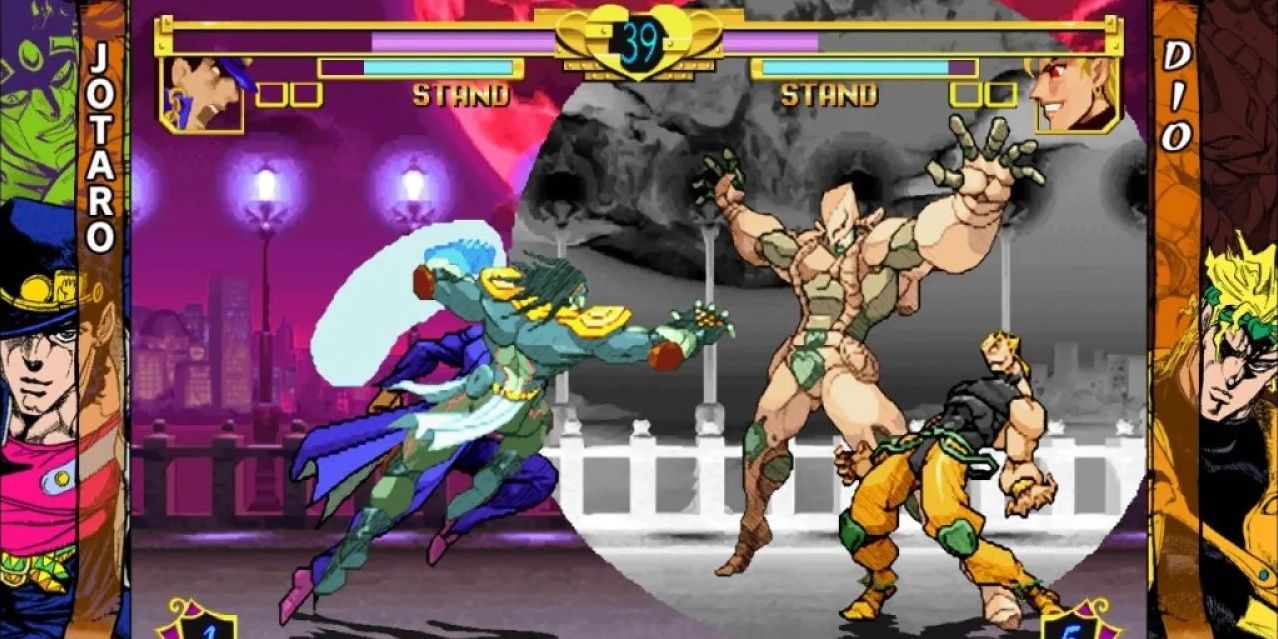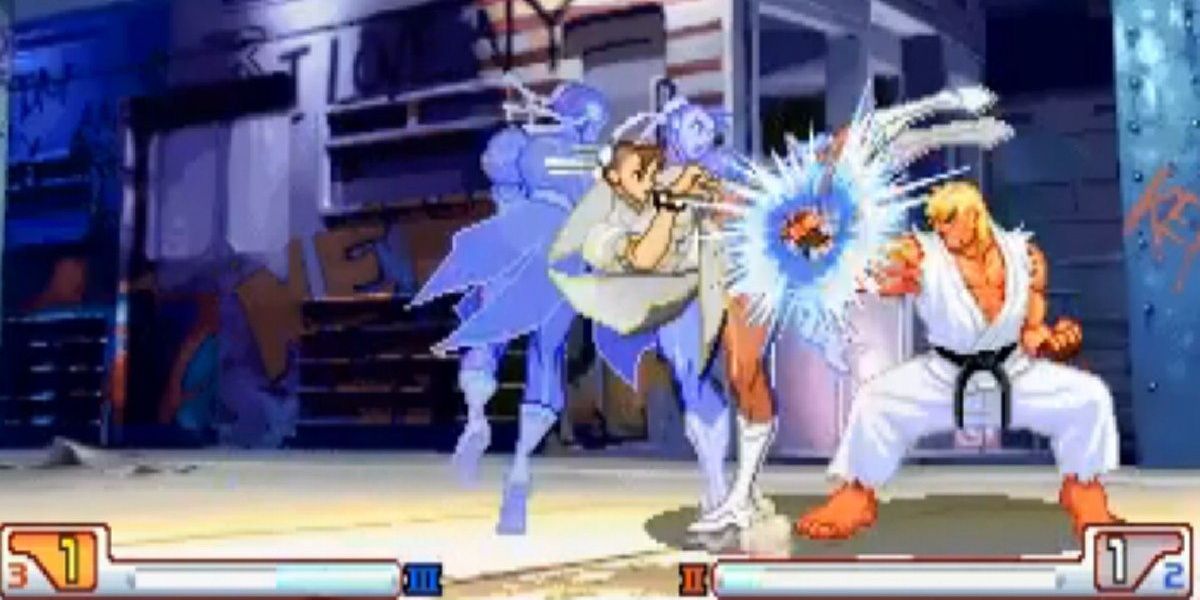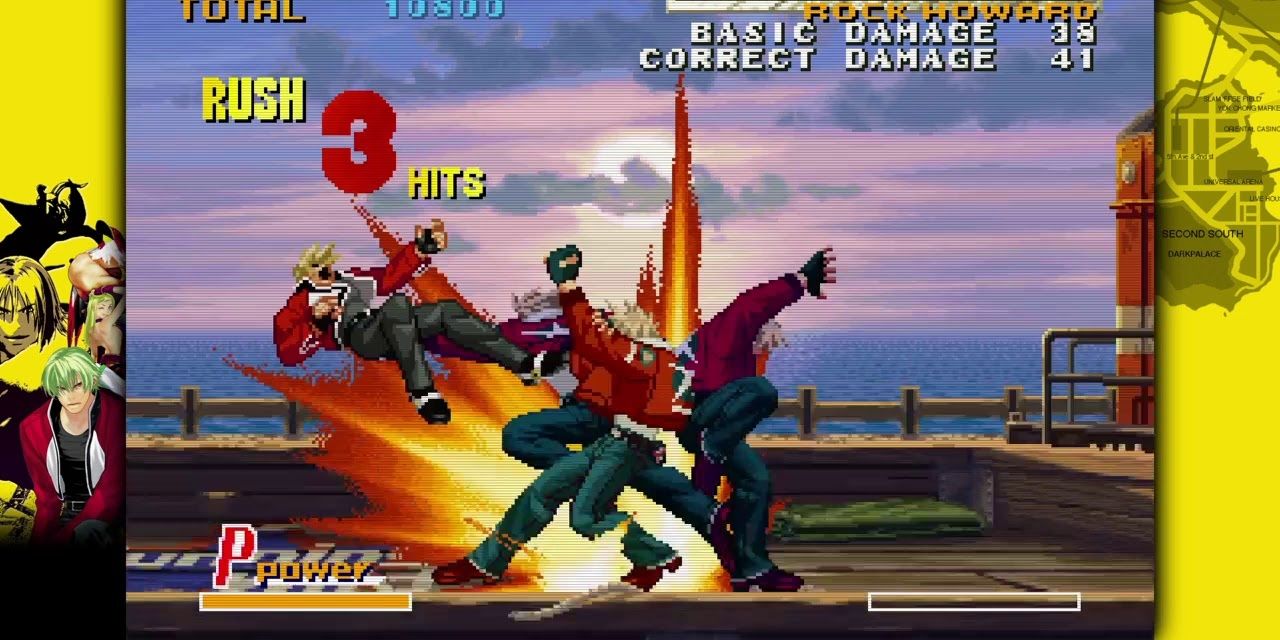Fighting games have had a resurgence in the past decade and change. Tekken 7 ended up becoming the most successful entry in that series. Netherrealm Studios’ Injustice series gave DC something to lord over Capcom’s Marvel games. Then ArcSystem Works succeeded in making anime fighters more faithful and better to play than the rest of the pack with Guilty Gear Xrd, Guilty Gear Strive, and Dragonball FighterZ.
That said, the genre has its fair share of flops. Who remembers Kensei: Sacred Fist? Or Destrega? Ehrgeiz: God Bless the Ring? Anyone? Though just because a game does badly in the sales charts doesn’t mean it was bad to play as well. These fighting games fell at the first hurdle yet are fondly remembered by the fighting game community.
8 Breakers’ Revenge
A non-SNK company making fighting games for the Neo Geo systems was the video game equivalent of bringing cheese steaks to Philly. Yet there they were. The biggest fighting game buffs could tell people all day about Power Instinct: Matrimelee, Rage of the Dragons, or the World Heroes series. Anyone else might not twig until they mention that edgy, pretty boy redhead from King of Fighters.
Breakers’ Revenge is less of a sequel to Visco’s Breakers than a special edition. It recolors some characters and stages and introduces one more new face in Saizo. It doesn’t do anything new compared to Capcom or SNK. Yet its crazy characters and straightforward gameplay have earned it an eager fanbase. Here’s hoping QuByte Interactive’s long-awaited Breakers Collection for PC, Switch, PS4, Xbox One, and beyond lives up to their expectations.
7 Rival Schools
Maybe saying Rival Schools bombed is harsh. However, it did only get 3 mainline games, with one being Japan-only, and the last one came out over 20 years ago. The series should get more love though, as they’re wonderful to play. The first game has a neat team-up system where a character’s partner can do team attacks or give them health or super meter boosts.
The third and final game, Project Justice, introduced triple team attacks, and a way to stop them (quickly hit one of the other team’s members before a countdown ends). The character designs are also a charming send-up of school anime tropes, from the school swim team member beating opponents with swimming strokes to the school council’s Chairperson using a blackboard to aid their mid-battle pep talk.
6 Power Stone
Appearing on the Dreamcast, Power Stone and its sequel did things a little differently. Instead of taking place on a 2D plane, combatants could run around a 3D stage and attack each other in between hunting down power-ups and weapons. Eventually, they could pick up the titular ‘Power Stones’ and go into Super Being Mode to smash their enemies with Fusion Moves.
In short, Power Stone was basically Smash Bros on a 3D plane, complete with the items and simpler move sets. Only its cast of characters didn’t have the same name recognition as Nintendo’s crew, and it never got ported anywhere else. It stayed on the Dreamcast and died with it. It’s a shame, as it might’ve done well on the Playstation 2 or Gamecube. With the rise of other platform fighters like Multiversus, the Power Stone games might still do well today.
5 Killer Instinct (2013)
The original Killer Instinct games weren’t as solid as their rivals, yet had plenty of charm. Fans clamored for a ‘Killer Instinct 3’ for years, and they finally got it in Double Helix’s Killer Instinct reboot. Its first season was rough due to development troubles and bad PR. It also had an odd free-to-play model where Xbox owners would get the game and two characters fresh out of the digital store, then they’d buy everything and everyone else bit by bit.
Once its reins were passed onto Iron Galaxy, Killer Instinct came into its own. Old favorites returned with new looks and moves to test on the newcomers. The combo-heavy gameplay was made more strategic with its Lock-Out mechanic and Shadow Counters while retaining the classic elements people loved. Like the Ultra Combos, and the hyped-up cries from the announcer to go with it (“ULLLLLLLTTTTTRRRRRAAAAAAAAAAAAAA!!!!!!”). It went from getting the cold shoulder to being back in demand.
4 Eternal Champions
There are more ways to bomb than just lagging sales. For example, Sega Interactive produced Eternal Champions, a 2D fighting game with historical figures fighting to regain their souls. The character designs had a neat, pulp comic look to them, and it was bloodier and nastier than Mortal Kombat. It did get a Sega CD port and two Game Gear spin-offs. UK publishers Fleetway even gave it a strip in Sonic the Comic!
It did well enough for a sequel to go into production. Then it got canceled because Sega of Japan didn't like the series. They did like Virtua Fighter, which was going to be a launch title for the Sega Saturn, and they didn’t want Sega Interactive undermining it with their gory throwback. Thus, Eternal Champions met its end, with just a few fans keeping its flame alive.
3 Jojo’s Bizarre Adventure: Heritage for the Future
Nowadays, a Jojo’s Bizarre Adventure fighting game made on the same arcade board as Street Fighter 3: Third Strike sounds perfect. Unfortunately, Jojo didn’t really make it big in the West until 2012. Sure, it was famous in Japan, mainland Asia, and some European countries. But if anyone beyond those places was asked about Mohammed Avdol’s Magician’s Red back then, they’d probably think there was a magic show going on.
It had nearly all the characters from Part 3: Stardust Crusaders, complete with their insane Stands and abilities. Particularly the end boss Dio, who can stop time and drop Road Rollers on his opponents. The game did get an HD port to the PS3 and 360, though it’s long since been delisted. The only way to play it now is to hunt down its old PS1 and Dreamcast ports or try Fightcade.
2 Street Fighter 3: Third Strike
Everyone loves Third Strike nowadays. It’s the fighting game fan’s fighting game with its more methodical approach. Quick-thinking players can negate block damage by parrying attacks, use the meter to turn their Special Attacks into EX moves or tailor their style around 1 of 3 selectable Super Arts. It could be argued it was a better and more in-depth fighter than Soulcalibur, the Dreamcast’s highest-rated game on Metacritic. That wasn’t the case back in the late 1990s.
Casual fans didn’t care for it because it was 2D and thus old-fashioned compared to 3D brawlers like Tekken3. Keener fans didn’t like how it replaced most of the classic characters in favor of newbies. While fighting game aficionados felt its negative reception killed Street Fighter off, as it wouldn’t get a standalone new game until Street Fighter 4 in 2008. The game’s success today owes more to Daigo Umehara, Justin Wong, and Evo Moment 37 than to Capcom itself.
1 Garou: Mark of the Wolves
Like Third Strike, Garou also replaced all the classic Fatal Fury characters with newbies, with just Terry Bogard returning. Even then, he junked his trademark cap and got a bomber jacket. It also got rid of the lane-switching gimmick and played more like a Street Fighter game, complete with its own parry-like mechanic with the Just Defend.
It was also a beautifully animated game, rivaling Third Strike’s animations while using the older Neo Geo tech. The character designs are more varied and dynamic, from the cheery pirate B.Jenet to the intimidating sub-boss Grant. Yet, being a 2D game on decade-old hardware in a dwindling arcade market, it had no chance back in 1999. Today, it’s received much more love on the PS3, 360, PS4, Xbox One, and Switch among even more ports.

